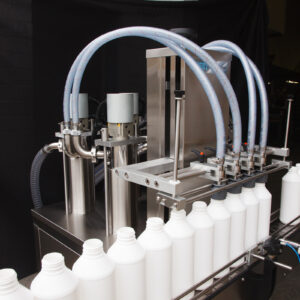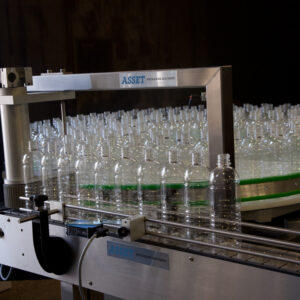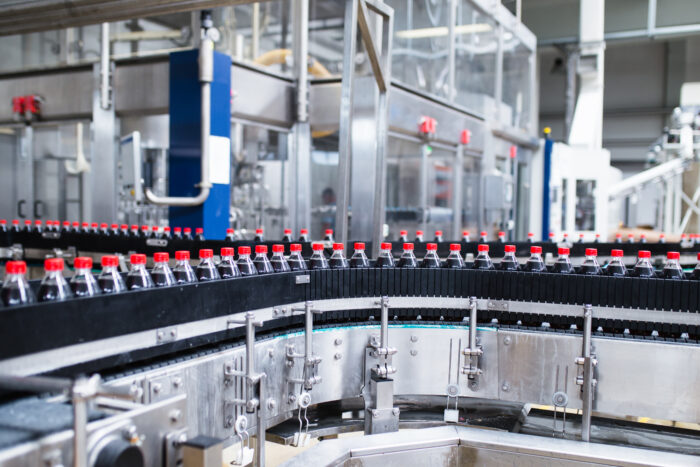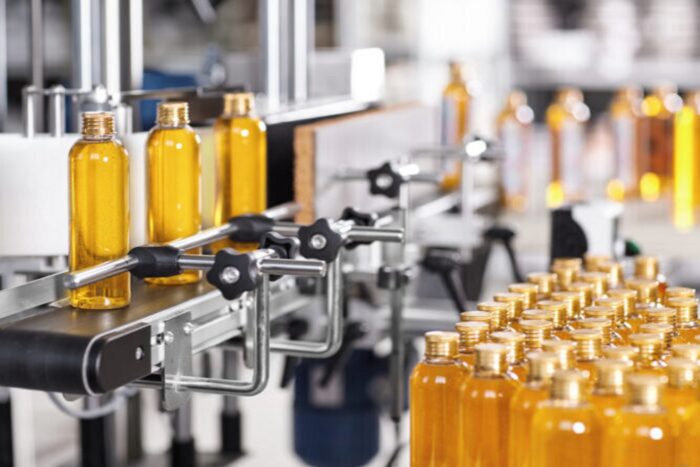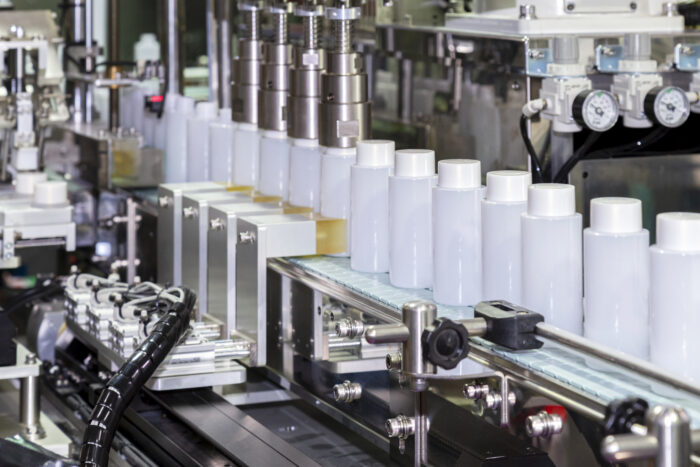For many businesses, investing in automatic packaging machines makes sense. On production lines, machines fill and cap containers quickly, helping businesses scale up production and lower labour costs. The increased efficiency can help businesses fulfil growing demands and thrive, able to seek out larger customers.
However, for some businesses, fully automated packaging systems are not the answer. Sometimes, especially for SMEs with low production volumes, their smaller scale operations cannot justify such a huge outlay. Some businesses lack room for automated systems, or they simply don’t have capacity in the rest of the production line.
On the other hand, manually filling bottles and tightening caps can be a very time consuming and monotonous task. This is especially true in a world shaped by the pandemic, where businesses have had to revisit their production processes, often using fewer staff. Is there a way to benefit from packaging machines and find the best of both worlds?
Semi-Automated Packaging Machines – A great compromise
Fortunately, there is another option that brings many of the advantages of automation to smaller businesses. Semi-automated packaging machines are a cost-effective solution that can help SMEs speed up the filling process. They can match the competition without spending money better used elsewhere.
What is a semi-automated packaging machine?
Semi-automated packaging machines involve human input at some stage, but they are still much quicker than manual processes. For example, with semi-automatic filling machines, an operator places the containers in the right place and presses a switch. The machine takes care of filling the containers and the operator carries them to the next part of the process. This next stage is often a semi-automatic cap tightening machine, where they place the filled containers and let the machine tighten the cap. Where a business has low production requirements, semi-automatic systems bring a number of advantages.
The advantages of semi-automatic packing machines
Semi-automated packaging machines bring a whole range of benefits that can make them invaluable to the right business. For a start, letting a machine fill a container or multiple containers speeds up the process and lowers labour costs significantly. For businesses with a small staff, this frees people up for the many other important tasks that always seem to need doing, such as quality control, cleaning and customer service.
Importantly, semi-automatic filling machines have preset fill levels to deliver exactly the right amount of product. Unlike manual filling, you don’t overfill and waste product, or underfill, which can drive away customers. These machines don’t spill, further reducing wastage and making sure that there are no puddles on the floor for people to slip in, keeping you and your staff safe.
Semi automatic capping machines tighten caps with exactly the right amount of torque. You don’t risk damaging the product through over-tightening. Just as importantly, you don’t risk product leakage and spoiling from under-tightened caps.
Another useful advantage is that these machines are very easy to set up and use. You don’t need to send staff on extensive training programs or waste valuable time configuring the machines for new products. Your staff will thank you, too, because filling countless containers manually can be a very monotonous chore. With help from machines, they are less likely to tire mentally and you lower staff turnover because your employees are happier in their work.
Supporting the bottom line
Finally, there is the bottom line. While any packaging machine requires an investment, the cost of semi-automated systems is lower. With a smaller footprint, they fit into existing production processes and don’t need additional machinery like conveyors. Some companies, like Asset Packaging Machines, even let you hire a system if you want to try out the technology.
Because of these advantages, semi-automatic packaging machines see extensive use across a range of sectors. SMEs producing honey and companies producing hand-made cosmetics at home are just some of the businesses helped by semi-automatic machines. Countless businesses in food and beverages, chemical production, and cleaning products understand their value. If you want to use this technology, how do you go about finding the right machine?

How do you find the right machine?
In Australia, a range of companies offer semi automated packaging equipment, competing with a number of international organisations. This makes a very crowded marketplace that can be hard to navigate. With a huge range of options, how do you pick the types of packaging machine that will help your business thrive? How do you find a reliable, cost-effective option that can cope with multiple products and is easy to repair?
The ideal semi-automatic packaging machine should be durable and manufactured to stringent standards with superior materials such as stainless steel. While there are many low-end machines on the market, these often prove to be false economy. They can regularly break down, are inaccurate, or are difficult to service. While budget is always important, this should not be at the cost of quality or risk staff safety.
Semi-automatic packaging machines should be easy to clean and maintain, especially for hygiene conscious sectors, and easy for all employees to use. They need intuitive controls and the correct safety features, and they should be flexible. Employees should be able to reset machines for different products quickly, helping businesses switch between different products and containers.
The personal touch
Another important factor is the level of support from the manufacturer, which can make all the difference. Rather than just selling you a machine and leaving you to get on with it, a good company helps you choose the right option and decide where it fits in your production line. If things go wrong, you want a technician familiar with the equipment to arrive quickly, without waiting weeks for spare parts from abroad. A reputable supplier company will help you with training and offer all the after sales support you need.
Asset Packaging Machines has the right solution for your business
This is where an Australian company like Asset Packaging Machinery comes to the fore. With decades of experience and a deep understanding of SMEs across many sectors, we know how to help companies benefit from semi-automatic packaging machines.
We build our machines to last, and they meet stringent Australian standards and pass through quality testing before they leave our factory in Sydney. Over the years, we worked with our customers, building trust and helping them extract the maximum value from our machines. Our experienced fabricators and technicians understand these machines, helping you fit them seamlessly into production. With support throughout the entire process, our semi-automated packaging machines are Australia’s premier choice.
If you want to see how our tried-and-tested machines have helped countless small and medium businesses in Australia, visit Asset Packaging or talk to one of our agents on (02) 9958 2883 for more information. Together, we will find the perfect solution.






